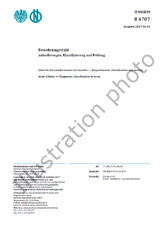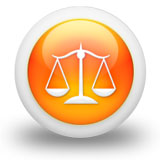We need your consent to use the individual data so that you can see information about your interests, among other things. Click "OK" to give your consent.

ÖNORM EN 12258-4
Aluminium and aluminium alloys - Terms and definitions - Part 4: Residues of the aluminium industry (multilingual version: de/en/fr)
Translate name
STANDARD published on 1.3.2005
The information about the standard:
Designation standards: ÖNORM EN 12258-4
Publication date standards: 1.3.2005
SKU: NS-754386
The number of pages: 22
Approximate weight : 66 g (0.15 lbs)
Country: Austrian technische Norm
Category: Technical standards ÖNORM
The category - similar standards:
Environment and health protection. Safety (Vocabularies)Metallurgy (Vocabularies)Special wastesAluminium and aluminium alloys
Annotation of standard text ÖNORM EN 12258-4 :
Diese Norm enthält Definitionen von Begriffen, die hilfreich sind für die Kommunikation innerhalb der Aluminiumindustrie sowie mit Behörden und Subunternehmern und die sich auf Versand, Verwertung oder Entsorgung von Rückständen beziehen. Rückstände, die mit gleichen Eigenschaften allgemein in anderen Industrien und privaten Haushalten auftreten, werden in EN 13965-1 definiert. Diese Norm enthält keine Begriffe, die sich auf Aluminiumschrotte beziehen; solche Begriffe können in EN 12258-3 gefunden werden. Die Einbeziehung eines Materials in diese Norm bedeutet nicht, dass dieses Material als Abfall angesehen wird. Definitionen von allgemeinen Begriffen, welche die Kommunikation in der Aluminiumindustrie erleichtern, sind in EN 12258-1 zu finden. In einem Wörterverzeichnis sind alle in dieser Norm definierten Begriffe in alphabetischer Reihenfolge aufgeführt.
We recommend:
Updating of laws
Do you want to be sure about the validity of used regulations?
We offer you a solution so that you could use valid and updated legislative regulations.
Would you like to get more information? Look at this page.



 Cookies
Cookies
